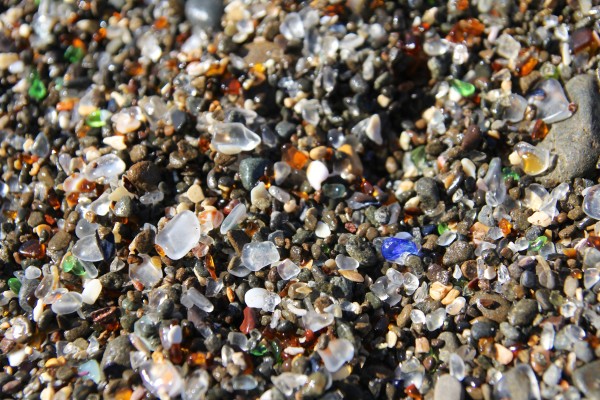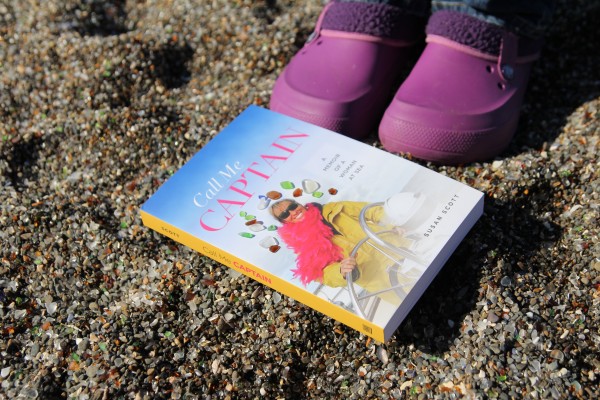Published in the Ocean Watch column, Honolulu Star-Advertiser © Susan Scott
September 8 2014
Last spring in Tahiti, while preparing my sailboat for a South Pacific cruise, I took a break to go snorkeling with a little girl I met in the marina. The 9-year-old and I had a fine swim, and afterward we walked the beach, looking at the variety of objects the ocean had washed up.
Our beachcombing led us in opposite directions, and later the girl came running to show me her finds. I watched her dump her plastic cup onto a concrete park step, expecting to see snail shells, crab claws and sea urchin tests. Instead, I saw bottle shards.
 Glass Beach, Fort Bragg, CA.
Glass Beach, Fort Bragg, CA.
©2015 Scott R. Davis
A few of her green, brown and clear pieces were slightly milky and rounded, but most were transparent with jagged edges. They weren’t dangerously sharp, but clearly the glass hadn’t been in the ocean long. Some stamped-in logos were clear. These were broken beer bottles.
As I watched the girl sort her treasures, she said, “I just love how the ocean makes glass.”
Oh, dear. Should I tell her where beach glass really comes from? To this child, the cup contained gemstones. It seemed wrong to spoil her day.
I remembered that moment with my young friend vividly last week when a friend emailed me a story and pictures of a place called Glass Beach in California’s MacKerricher State Park.
Glass Beach got its start in the early 1900s when area residents threw their garbage over the cliff into the ocean. The household trash included cars, appliances and, of course, glass bottles and jars.
By 1949 the beach area below the cliffs had become the public dump with trash in some places piling up three stories. It wasn’t until 1967 that officials closed the area to dumping.
Cleanup efforts over the years removed most of the big stuff from the beach, but the ocean kept the glass.
Since then the Pacific surf has been pounding, scouring and rounding the glass trash, resulting in tons of smooth, frosted multicolored chips that the waves cough up on the beach.
The phenomenon became known as Glass Beach and was so remarkable that the property’s owner sold it to the state in 2002 to include in California’s park system. Today Glass Beach is a tourist attraction, drawing thousands of summer visitors to view the rainbow-colored shore and listen to the tinkling of the pieces as the waves roll them.
Today, after years of continual motion, the pieces are wearing down, some to mere granules, making some parts of the beach sparse in glass. In addition, although park officials discourage the taking of glass, people collect it for souvenirs and to sell. Sea glass is prized for jewelry, furniture inlays and other creative artwork.
As the little girl sorted her colored chips, I decided it was wrong to let her believe that the ocean made the glass. I broke it to her gently: Sea glass is the result of people littering.
She took it well, because we talked about how even though the ocean doesn’t create glass, it works marine magic by turning something ugly into something beautiful.
To see some stunning photos of Glass Beach, check out bit.ly/Z4MZJj.
Note: Susan and her web guy Scott visited Glass Beach in February of 2015 during her West Coast book tour. Pictures from that later trip have been added to this post from 2014.
-
 At Glass Beach in 2015.
At Glass Beach in 2015.
©2015 Scott R. Davis